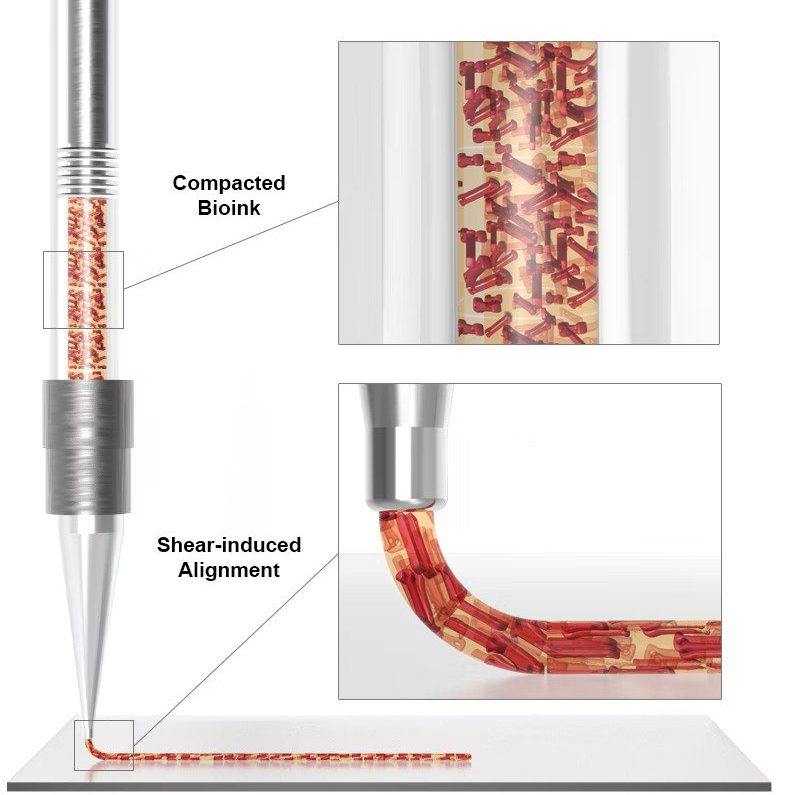In order to create a bioink rich in cells, the research team combined fibroblast cells, which make up a significant portion of the body's connective tissue, with extracellular protein collagen (ECM). As the cells compact the collagen, a dense microtissue is formed. These contractile organ blocks can then be used as raw materials for the bioprinting process.
The team observed the deformations of the printed microfilaments and discovered that tissue contractile forces and shrinkage rates increased over the course of seven days, meaning that the 3D printed tissues matured and developed into actual muscle fibers.
The selection of engineering materials used in bioprinting of human organs or components is a crucial consideration as it can impact their compatibility with the body and the risk of implant rejection.
The ideal biomaterial for bioprinting human organs or parts should possess similar biochemical and mechanical properties as the patient's own tissue. Furthermore, for bioprinted heart tissues to be effective, they must be fully compatible with the patient's immunological, cellular, biochemical, and anatomical properties.
Moving forward, the Harvard research team intends to expand their method to create more complex, multilayered tissues. The ultimate goal in this field is to successfully generate a fully functional heart that can be implanted.
Currently, 3D-printed biotissue can be utilized to create myocardial patches that can replace damaged tissue after a heart attack, similar to LEGO bricks. This technology can also be applied to newborns with congenital heart defects.

